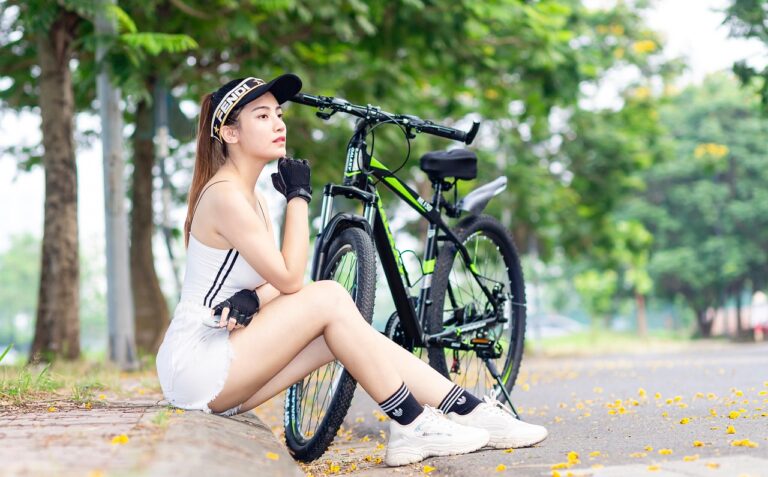To smoothly transition from working from home toward working at the Chinese offices, companies need to understand the expectations and needs of their employees to improve work efficiency and, therefore, firm profitability. Chinese people’s behaviour and mind have significantly changed after three years fighting against COVID-19.
Since 2019, with the outbreak of the global pandemic, working from home became a norm. During the pandemic period, most companies adopted a hybrid working mode to ensure day-to-day operation. According to Gensler Research, nearly 9 in 10 office workers in China were working in a hybrid mode in 2021. On 7th December, the Chinese government announced that PCR tests were no longer required for people entering public areas and that quarantine is not mandatory for international travellers. Many companies have then started planning a complete return to the office.
What Chinese employees expect from their companies in post-pandemic
Open, less crowded and less distracting working places are preferred
The workplace quickly and dramatically regained prominence as a critical location for professional work in China. Working from home during the pandemic has brought out the drawbacks of physical offices. According to Gensler Research, one in three workers in China who returned to the office said that their work environment is overcrowded and distracting. Nearly 70% of Chinese employees would prefer an open environment, and less than one in five claimed they prefer a private workplace.
Having a wider, more diversified and quieter working place ranked within Chinese employees’ top 5 most important reasons they would like to return to the physical office.
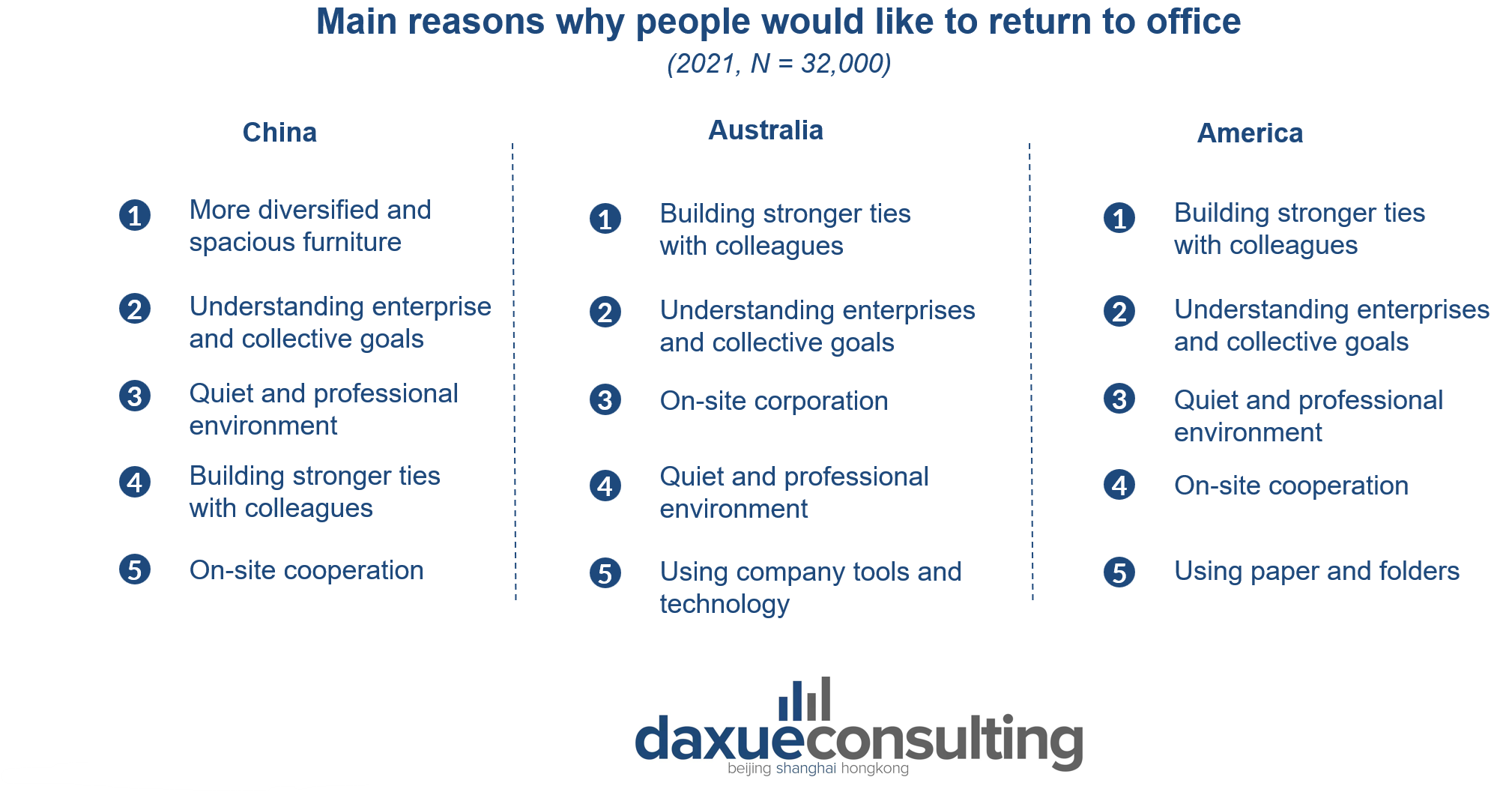
Chinese employees mentioned that cooperation, social purpose, resting, focus and utilising company tools are five critical aspects that they would like to get from working at the office. In addition, many leaders and managers mentioned that they are willing to offer more flexible work arrangements to employees.
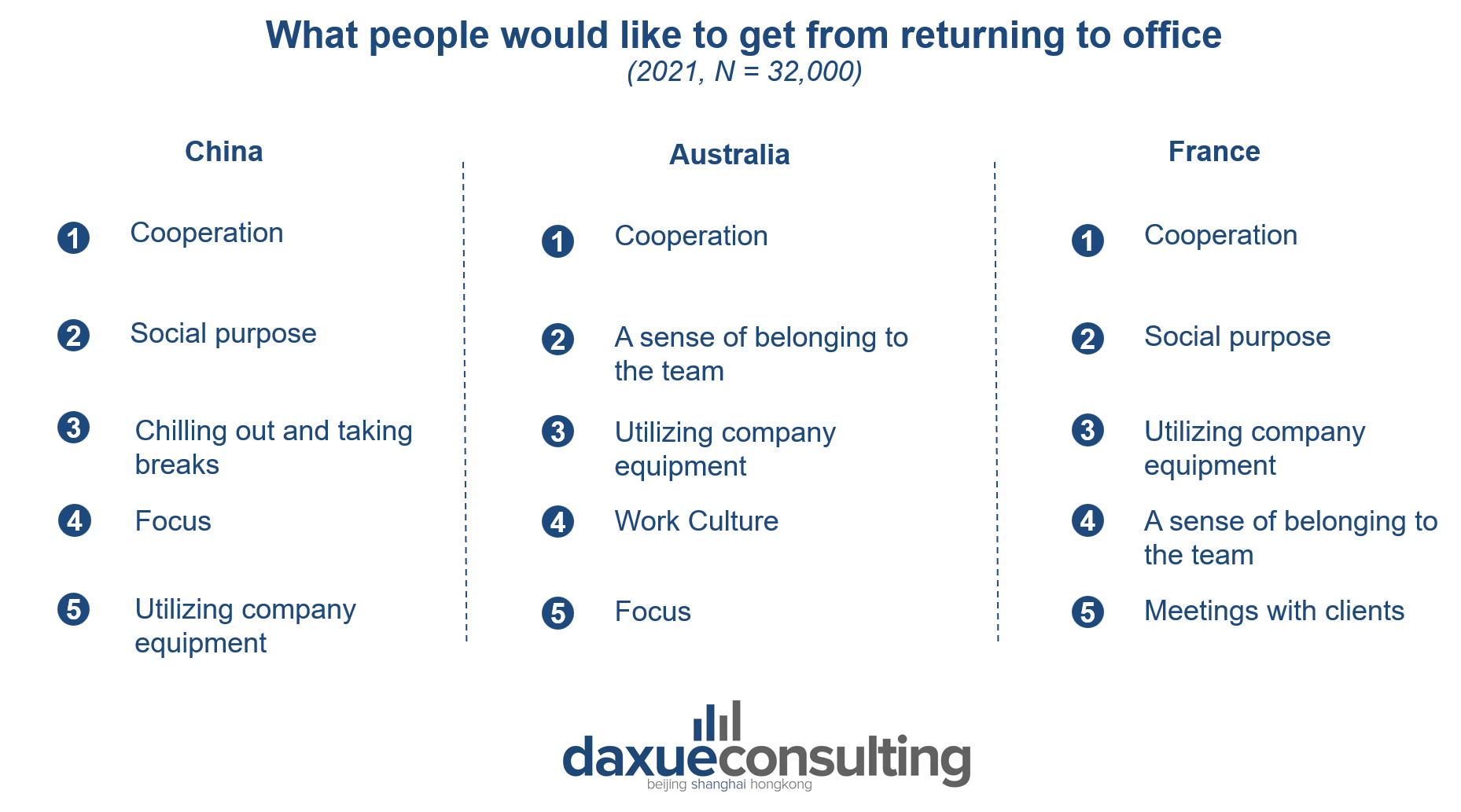
Gen-Z and Millennials actively promote working from home
As creativity and innovation have imposed themselves as the driving forces for the rapid development of enterprises, the competition for attracting young talents intensified. If enterprises can cater to the rising needs of both prospective and existing employees, they can attract and retain the top talents they need to grow. Nearly 80% of Gen-Z and Chinese Millennials believe having choices of working from home can release pressure; 83% of Chinese Millennials and 74% of Gen-Z think it is beneficial to achieve work-life balance. 72% of Gen-Z and Chinese Millennials wish they could choose to have more frequent remote working arrangements.
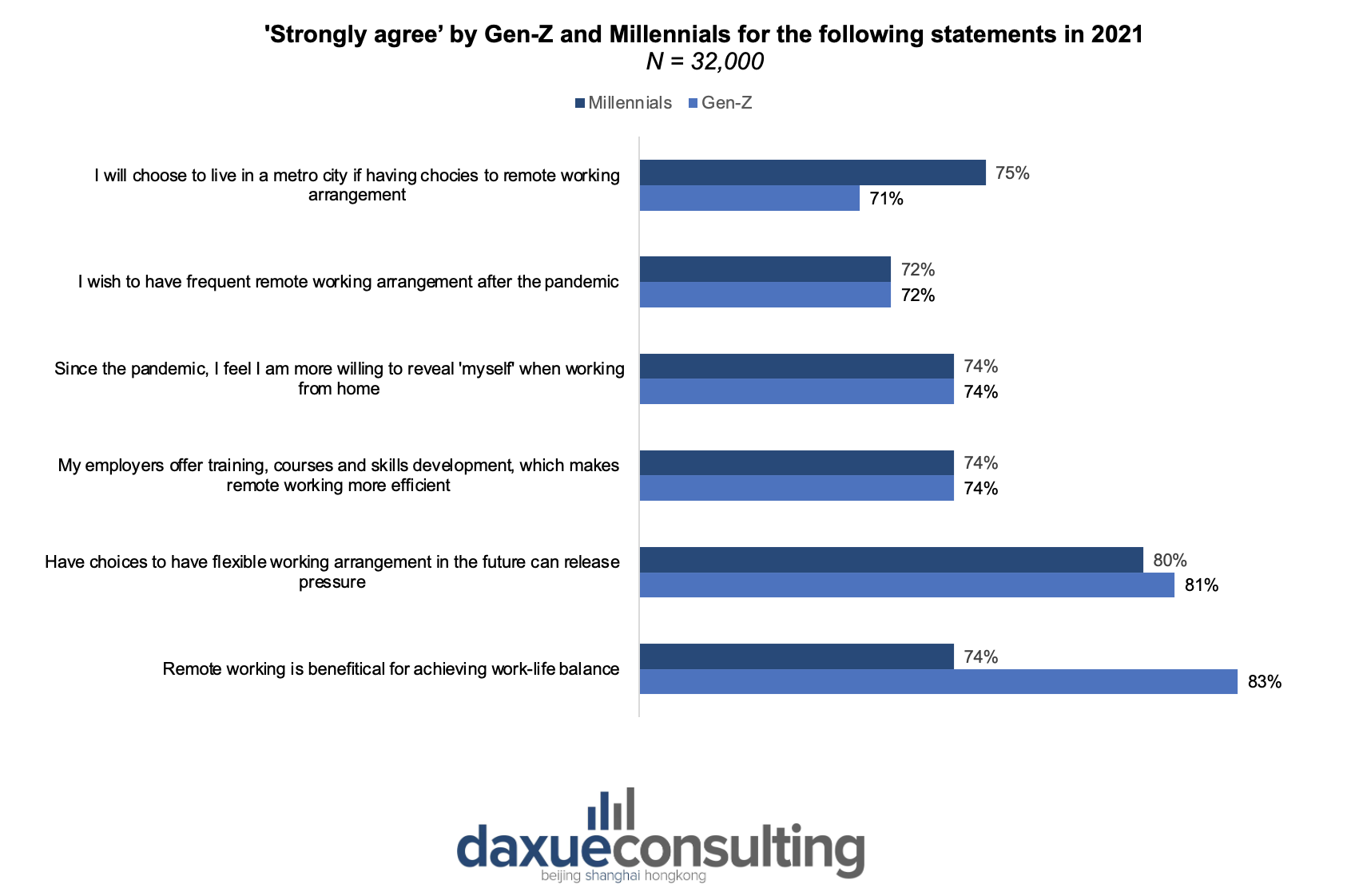
Common types of layouts of Chinese offices
In China, there are four common types of office layouts: single-room public space, unit-type office, apartment type, and open office. Each type of office layout is different in terms of spaces, functions, and environment.
1. Single-room public space
The single-room office is designed for individual departments. Most government institution offices use single-room offices as their major workplace layout. The advantage of a single-room office is its independent spaces, less distraction, independent control of light, and air-conditioning system. From a financial perspective, such an office layout is cost-effective when employees are off-site or on a business trip. The major disadvantage is that there may be limited space in the room; therefore, employees would feel overcrowded if many people came into the office.
2. Unit-type office
The unit-type office is a relatively independent office space composed of a reception area, office area, toilet, and service room. It has larger spaces with more business functions than single-room public spaces and working areas. Spaces in the unit-type office can be separated and used for different purposes, such as reception and office.
3. Apartment-type space
Mainly, the office building comprises apartment-type office design spaces, also known as commercial and residential buildings. Compared with other office layouts, it provides additional areas for dining and kitchen.
4. Open Office
The open office consists in placing several business departments in a large space, and each seat is separated by a baffle. This office layout has a centralised working area with relative lighting, decoration, and air-conditioning system costs. Compared to other office layouts, it is more distracting when people are talking in the room.
Increasing demand in office appliances in China
In recent years, there has been an increasing trend in domestic demand for office appliances, from 1.45 trillion RMB in 2014 to 2.01 trillion RMB in 2019. In 2020, the sales revenue dropped slightly to 2 trillion RMB because of the pandemic. However, according to Leadleo, it is predicted that the sales revenue of office appliances will reach approximately 2.28 trillion RMB in 2023 due to the relaxation of the easing of the Zero-COVID pandemic.
The promising future of the office furniture industry in China
In 2020, office furniture in China generated nearly 84.24 billion RMB in revenue. From 2014 to 2020, the Chinese office furniture industry showed a continuous growth trend with a CAGR of 8.87%.
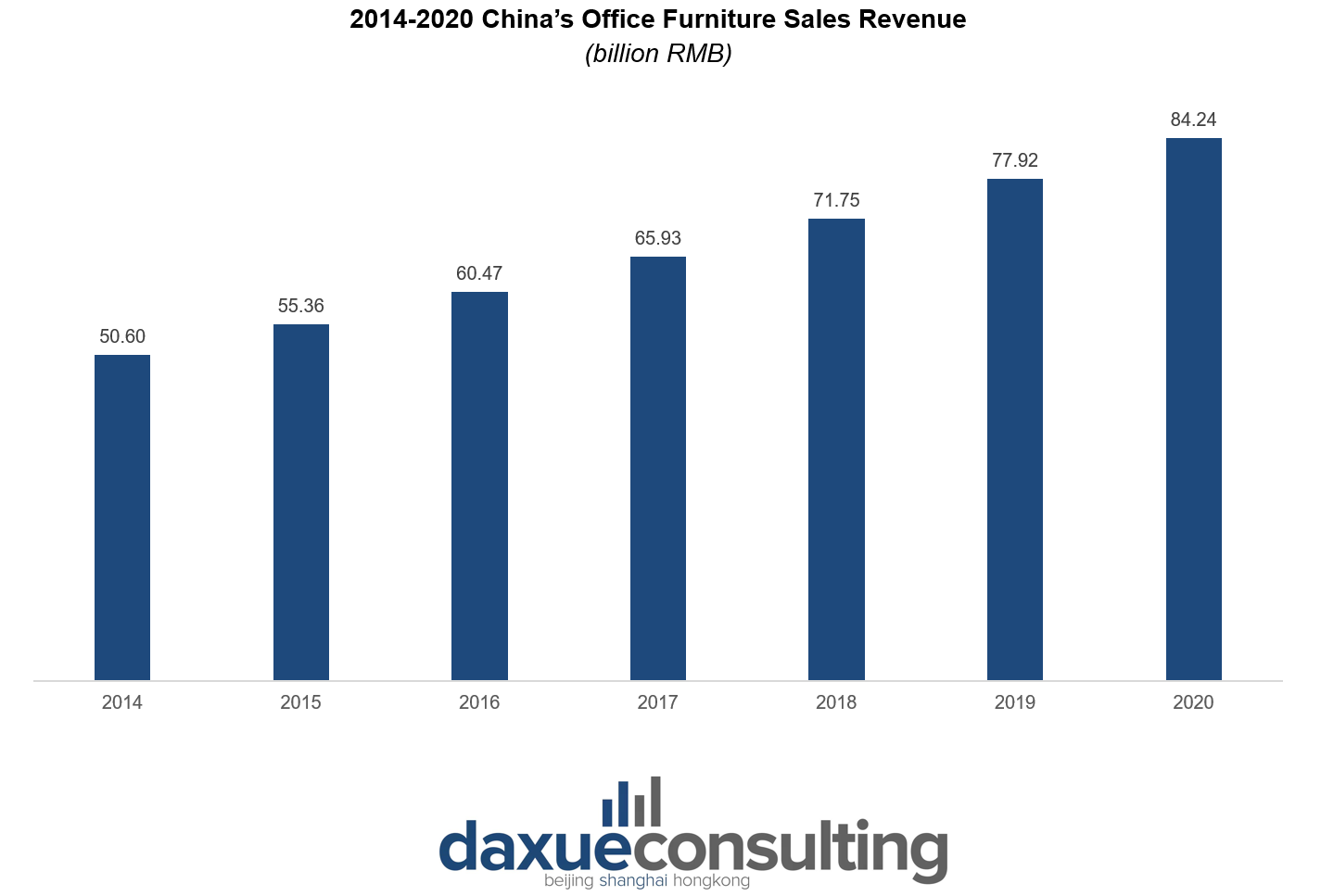
With the rapid development in the Chinese economy, many foreign companies have decided to expand their office in China, thereby further boosting the demand for office furniture. According to Qianzhan, China’s office furniture sales are expected to generate around 118.3 billion RMB by 2026.
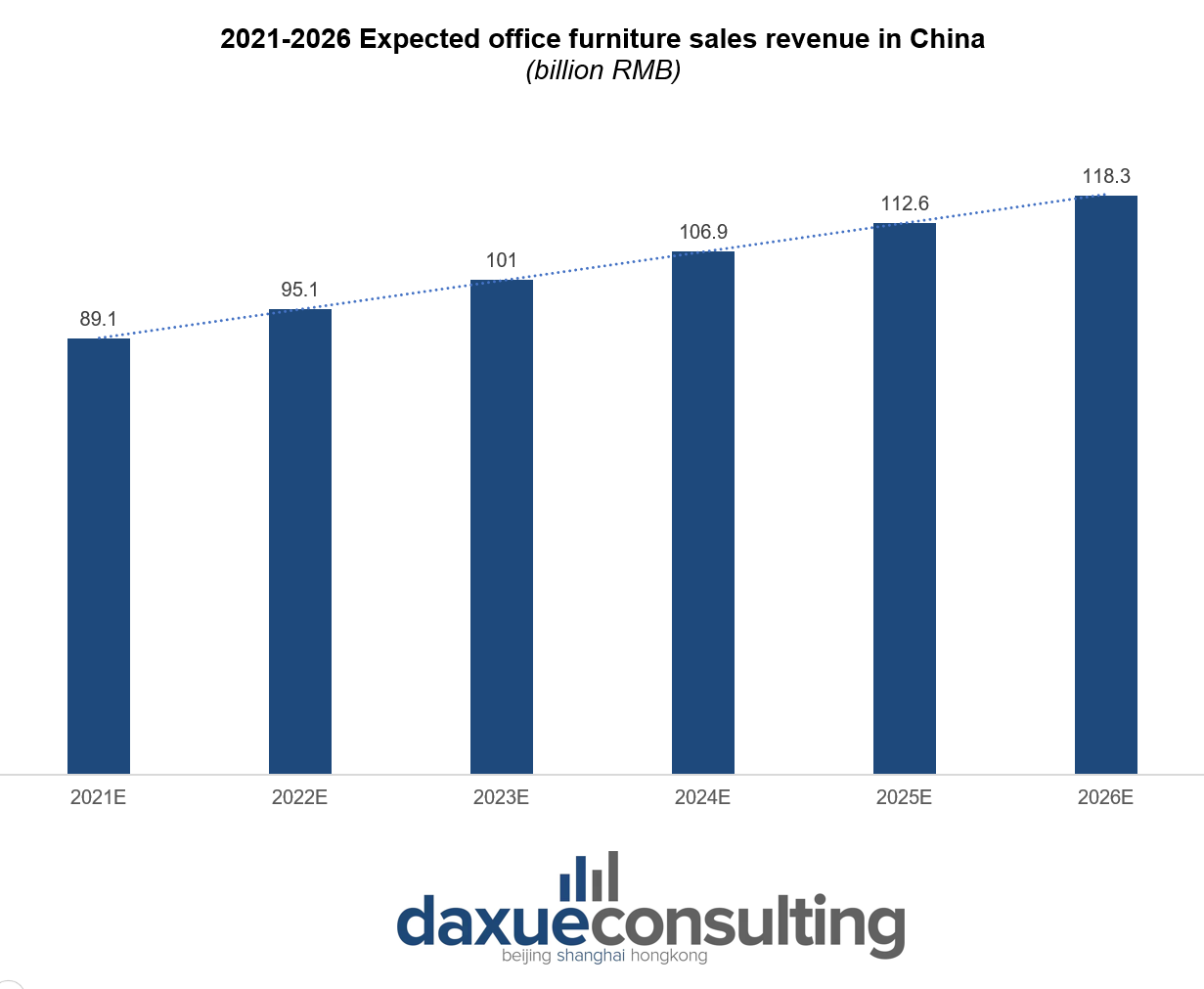
What you did not know about Chinese offices
Superstition in China influences the design of Chinese offices- Fengshui(风水) is a Chinese traditional belief dealing with the relationship between human being and the environment. Many businesspeople consult fengshui experts before developing a new business, choosing a company name, selecting the company location, and also when it comes to arranging the office layout.
Rule #1: People should not be sitting facing the entrance:
The entrance is considered the ‘gate’ for the inflow and outflow of the energy and forces in the office. If people sit in front of the entrance, it may negatively influence their consciousness and mentality.
Rule #2: The office should not be narrow and small:
Office size symbolizes the future development of the company. The narrower and smaller the office, the tougher the business situation will be. In contrast, a larger office area represents prosperity and a promising future.
Rule #3: There should be no chandeliers dangled from the ceiling:
When they have something hanging on top of the head, people may feel subconsciously in ‘self-defence’ mode, thus wasting energy and lose focus.
Rule #4: The seat should not be behind the door or aisle:
Similar to Rule #3, if people are walking, it may cause distraction and affect working efficiency.
Role #5: The light in the office should be bright:
Light symbolises the prosperity of the business, and all employees will make efforts to make progress. It is believed that poor light in the office will affect the business’ success and bring obstacles.
What are Chinese offices going to look like in the future?
- The easing of the Zero-COVID strategy untapped new opportunities for China’s office furniture and appliance industry, and sales revenue are expected to rise in the following years.
- After 3 years fighting against the pandemic, people’s expectations of their ideal workspace has changed. An open, less crowded, and distracting working place is preferred.
- The younger generation pays greater attention to mental and physical health and prefers remote working as well as a flexible working arrangement.
- The future workplace must balance ensuring privacy with facilitating teamwork.
Listen to 100 China entrepreneur stories on China Paradigms, the China business podcast
Listen to China Paradigm on Apple Podcast




